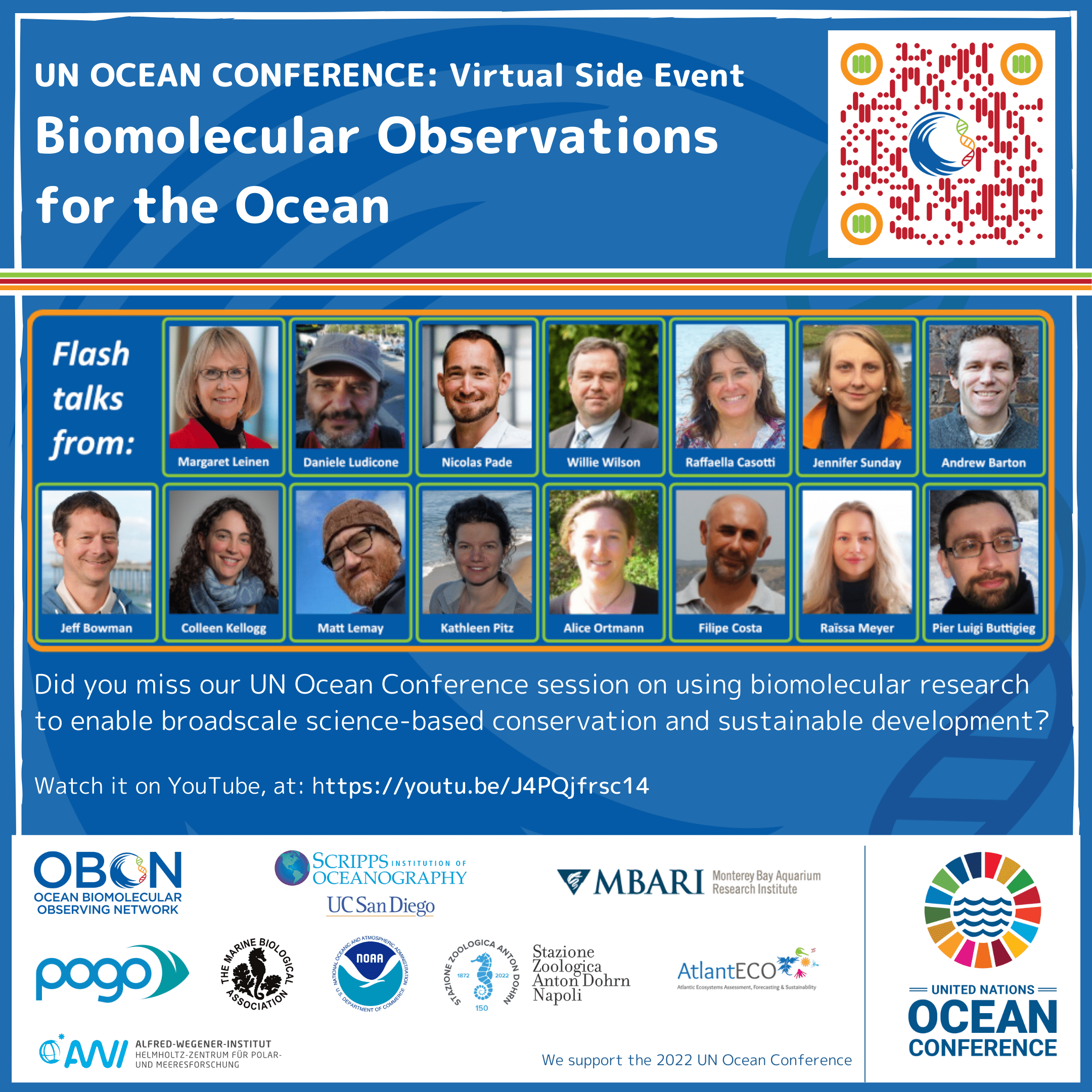New projects
In the recent round of endorsements, the Ocean Biomolecular Observing Network (OBON) has gained four new UN Ocean Decade endorsed projects and we have a few other projects in the pipeline. Our newly endorsed projects are:
Western Channel Observatory Biomolecular Observing Network (WCO-BON)
Main lead: Willie Wilson, Marine Biological Association
The WCO is situated in the 1000 square kilometers of water near the Plymouth Sound, an important boundary region between oceanic and neritic waters. WCO BON builds on over a century of biological observations; maps key biodiversity drivers; determines functional capacity of an immense genomic reservoir; achieves integrated biomolecular observations & data sharing to contribute to OBON’s deliverables and to establish a national training centre for biomolecular observing. https://www.westernchannelobservatory.org.uk/ ; https://www.smartsoundplymouth.co.uk/ ; https://www.wco-bon.org.uk
Naples Ecological Research Augmented Observatory (NEREA)
Main lead: Raffaella Casotti, Stazione Zoologica Anton Dohrn
NEREA is based on the long-term monitoring station Mare Chiare, based in the Gulf of Naples, which has been operational since 1984. They have long-term observations and NEREA is augmenting these observations, by concentrating on metabarcoding, metagenomics and metatranscriptomics on different size fractions. We can address the challenges by using a holistic approach, from genes to fish stock and markets via data science, using physics, molecular biology and modelling to get an approach from the sea to the labs, to develop indicators in molecular methods that can feed knowledge to management and output.
www.nerea-observatory.org Twitter: @NEREAObservato1
Hakai Institute Biomolecular Observing Network
Main lead: Colleen Kellogg, Hakai Institute
This project is based in the traditional ancestrial and unceded territories of the Musqueam, Squamish and Tsleil-Waututh First Nations in Vancouver, British Columbia.
The HI-BON (Hakai Biomolecular Observing Network) brings together a network of partners, employing molecular based assessments to create baselines, track changes through time and provide local scale biodiversity data in remote areas to support local stewardship and conservation planning in the British Columbia region. A large part of what we do is also capacity building, by developing community partnerships to create special and temporal coverage of what we can monitor with biomolecular surveys and to promote community led ocean conservation, which is key to the success of our network.
Better Biomolecular Ocean Practices (BeBOP)
Main lead: Kathleen Pitz, Monterey Bay Aquarium Research Institute
The BeBOP programme wants to focus on how we share, discover and compare the practices and protocols of data that comes out of all this work. From initiating a study, to publication and use of the results. Together with the Ocean Best Practices System (OBPS) we developed a framework to think about all the protocols that go into an omic research study. The different methodology categories were identified, ranging from society, design and logistics, ethics and law, data management, sampling collection procedures, contextual metadata & analytical procedures, all the kind of physical metadata you may collect alongside your sample, the sample extraction & purification, omics sequencing procedures, Bioinformatics, quantitative amplifications, data analysis, sample archiving and biobanking.
Ocean Best Practices Omics task team:
UN Ocean Conference side event
OBON held a virtual side event at the UN Ocean Conference in Lisbon, which featured presentations by UN endorsed projects as well as projects that have been and will be proposed.
While real-time data acquisition tools exist for physical and chemical ocean parameters at global scale, there is no equivalent unified global surveillance of life in the ocean. Biological observations at appropriate phylogenetic, temporal and spatial scales are necessary to understand the impacts of ocean health decline and ensure sustainable development. Several recent demonstrations have validated biomolecular methodologies for fisheries management, conservation (e.g., threatened species, marine protected area design), aquaculture, biogeography and exploration, while enabling fast and inexpensive infectious disease analyses. Our vision, a global marine life surveillance program, builds on successes of these and other biomolecular research programs, enabling broadscale science-based sustainable development. OBON invited a number of relevant projects to give a brief overview of how biomolecular observations are being used to develop our understanding of the world’s ocean ecosystems and support their conservation and management. After the brief overviews from these projects, the discussion focused on how the projects could work together within the framework of OBON, particularly in terms of engagement with stakeholders and potential users of biomolecular data.
One group of projects consisted of locations where time series of biomolecular observations have been established and could be combined with accompanying physical, chemical and biological data to understand change in ecosystems and its context. A second group of projects focused on the OBON data platform, on methodology and best practices and on capacity development. The presenters and participants engaged in an extended discussion on how biomolecular research can enable broad-scale science-based conservation and sustainable development. Issues that need to be addressed are harmonisation of protocols and data strategies, how to work with sensitive data, and how we can build capacity in areas where currently no well-equipped laboratories are available and resources are scarce. A recording of the side event can be found here: https://youtu.be/J4PQjfrsc14
Credit and description of any accompanying high resolution image/s: Fiona Beckman (POGO,OBON), Lica Krug (POGO)
Authorship of the article: Margaret Leinen, Astrid Fischer

